Description and main varieties of hornets
In recent years, urban residents are increasingly faced with hornets, which pose a great danger to humans. This is a large-sized insect that lives in large colonies, locating nests in secluded places, on roofs of houses, in farm buildings or in hollows of trees. You need to understand how dangerous a hornet is for a person, how it is possible to destroy a colony of insects, whether to carry out such work independently or contact specialists.
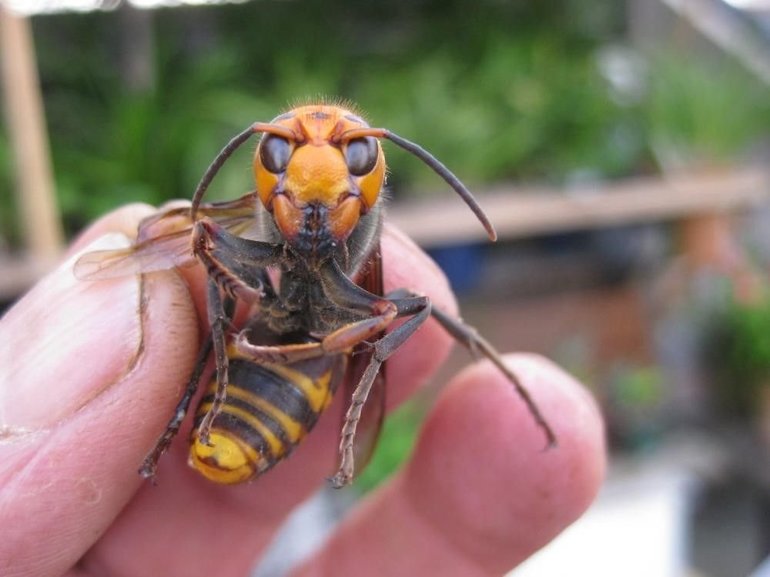
Hornets description
Hornets are a separate type of public wasp that are distinguished by their large size. In the middle zone of Russia, the common hornet lives, which usually reaches 3.5 cm in body length. While the eastern and Japanese varieties are 5-6 centimeters long - this is a truly gigantic insect the size of a small sparrow, the bite of which can become fatal to humans.
In its appearance, the insect looks like a wasp enlarged several times. This is an active predator that prefers to hunt for flies, grasshoppers, dragonflies, honey bees and other insects. He is often called a garden nurse, but for beekeepers, hornets are a real natural disaster. However, these insects do not disdain sweet plant foods, enjoy the nectar of fruit trees, especially like honey, which can be scented from a distance of 5 kilometers.
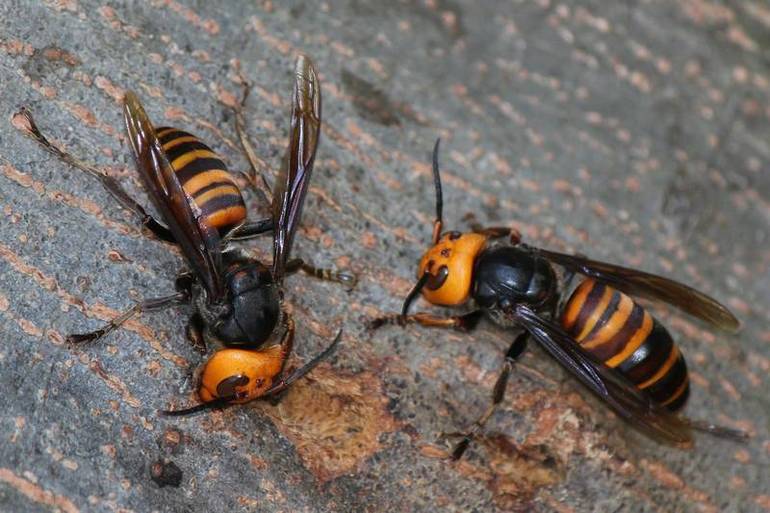
Hornets live in large colonies with a strict hierarchy, and the head of the family is the fertilized uterus, which actively lays eggs. The duties of all the remaining family members are to protect the queen and the entire nest, care for brood and search for food. If at the beginning of spring, as soon as the air warms up to 10-15 degrees, such a colony consists of only a female and several hornets emerging from the queen's eggs, then in the middle of summer a huge family can number several thousand individuals.
The hornet's nest resembles a paper ball in the bottom of which there is a small hole into which huge wasps constantly fly in and fly out. In each case, the size of the house of these insects will vary significantly. Hornets prefer to settle in secluded places, often choose free space under the floor or in old sheds and non-residential buildings.
In summer, as the swarm increases, the uterus can lay special eggs, from which the same queens hatch. After fertilization, they are expelled from the colony and fly away, establishing their own family.
In the fall, with the onset of cold weather, the uterus stops laying eggs, adult hornets fly out of the nest and die from frost, and the queen hides in a secluded place to winter and give birth to new offspring next year.
Behavior features
Hornets are considered predatory wasps, therefore such insects lead an appropriate lifestyle. They do not feed on pollen, but attack flies, dragonflies, and often make attacks on apiaries. Almost all of these large predators can be destroyed by almost the entire bee swarm.
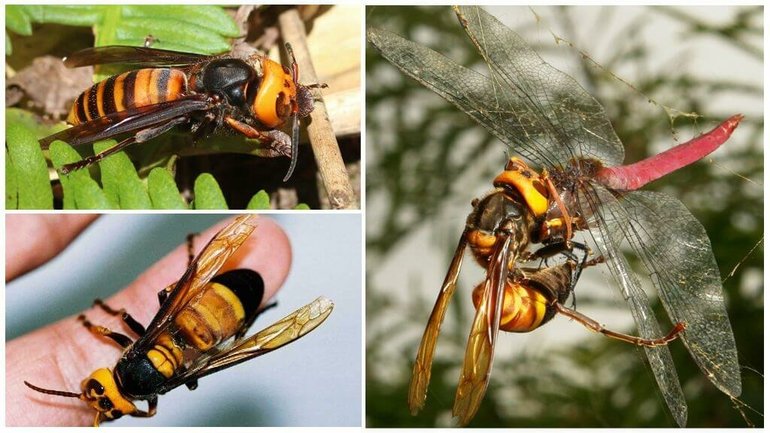
Under normal conditions, without being disturbed, hornets do not pose any danger to humans. But near the nest, these insects will bite and fight for their family to the last strength. Therefore, if you disturb the hornet’s nest, try to destroy or burn it, this can lead to an attack of these insects in a swarm and end up disastrous for humans.
Hornets are social insects expressed, so they are able to transmit information to each other by emitting pheromone odors. During the attack, the hornet with the help of special glands releases a special smell, which is immediately captured by other insects, after which they also begin to bite and sting the enemy, thereby protecting their nest. Therefore, it is extremely dangerous to try to kill such an insect near their large colony. This can provoke an attack of tens and hundreds of huge wasps in size.
Aggressive behavior of these insects is observed only in the immediate vicinity of their home. Therefore, in no case do you need to throw stones into the nest, try to somehow loosen or throw it. In no case should you try to poison them yourself, drown the nest in a bucket or put a bag on it to destroy the whole swarm.
With a cautious approach at a certain distance from such a colony, one can safely observe the life of these extremely interesting insects without risking being stung.
Main varieties
Scientists today know several dozen species of these insects, which differ from each other in their size, habitat, color and behavior. In the middle zone of Russia and in Western Europe, common hornet is widespread, which has a color almost similar to wasps, only in the color more brown and orange flowers can prevail. This large (up to 35 millimeters) insect builds paper nests, and their colony can reach several thousand copies.
Common types of hornets:
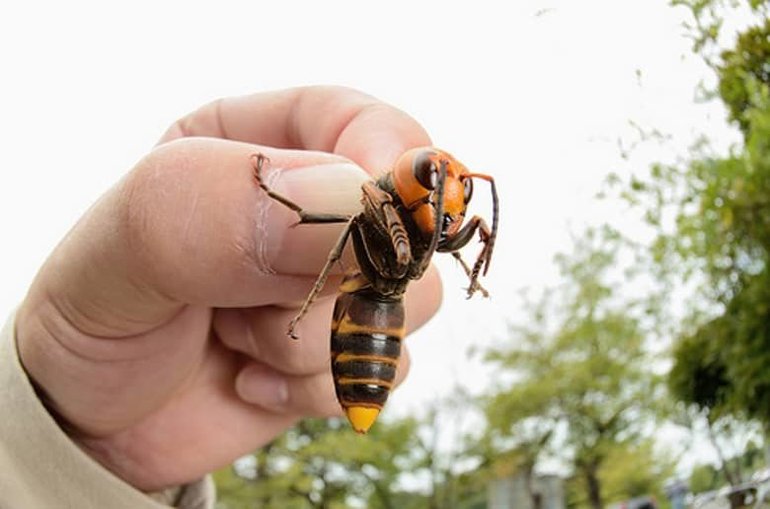
- Giant Asian.
- Japanese Hornet Sparrow.
- Ordinary European.
- Philippine.
- Caucasian.
- Black Dybovsky.
The most famous is the giant Asian variety of this insect, which in its size is no less than the average sparrow. The length of the body, which has a dark or brown color, can reach 6-7 centimeters. This is an extremely dangerous insect. Hornet venom contains the strongest toxins that lead to quick tissue necrosis, severe pain, and just a few bites can become fatal even for a healthy person.
Also notorious is the Japanese hornet-sparrow, which is found not only in Japan, but also in Sakhalin and the Far East. It is large in size up to 5 centimeters, lives in large colonies, prefers to settle not only on trees and abandoned buildings, but also in the ground, making multi-meter moves and galleries of enormous size. The bite of this subspecies is extremely painful, often leading to death or subsequent health problems in humans, which persist for life.
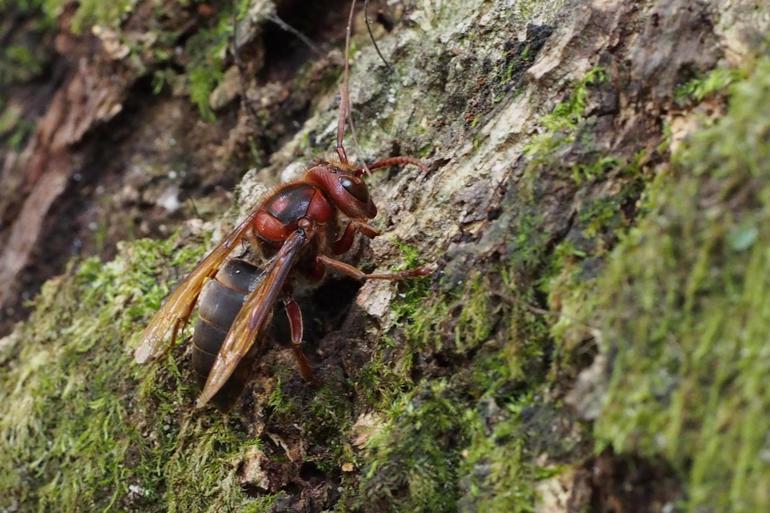
The black hornet of Dybovsky is an extremely rare species, which is now listed in the Red Book. It is found in the Far East, however, due to the widespread deforestation, its habitat is reduced, therefore, such insects are seen today only in protected reserves. They have a body size of up to 4-5 centimeters, a characteristic dark red and brown color, pose a certain danger to humans, if you disturb your family and try to destroy the nest.
Danger to humans
It should immediately be noted that the hornet in normal conditions will never be the first to attack a person. However, if you try to kill such an insect, make sharp provocative movements, then it can be perceived as an attack, after which such a huge wasp in size will immediately throw an attack on its offender. Most often, a hornet stings a person if he, unknowingly or deliberately, is next to the nest.
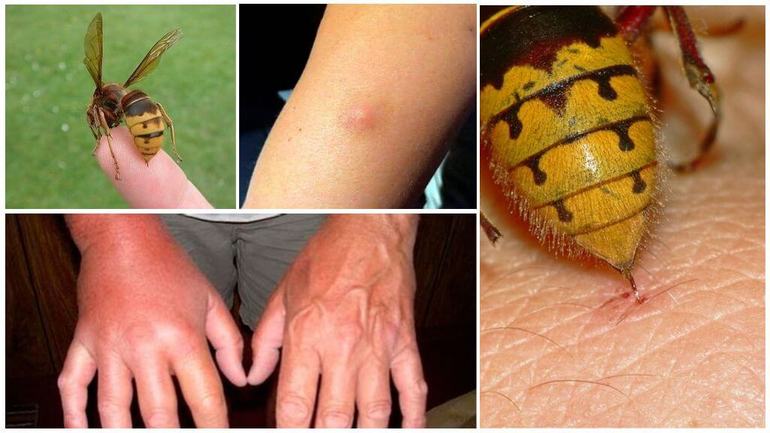
The bite of these insects is extremely painful, this is due to the high content of toxins in the poison. It is also necessary to take into account the fact that at the sting the hornet does not have characteristic notches, like bees and wasps.Therefore, this insect, stinging a person, can immediately get a sting and attack the enemy again, injecting a new portion of the poison under the skin. Of course, one insect will not kill a person, but a dozen such bites can very well lead to anaphylactic shock and death.
Hornet bite can be recognized by the following signs:
- pronounced swelling quickly appears;
- an allergic reaction spreads to other parts of the body;
- in the place of the bite, acute pain is felt with pressure;
- heart rate may increase;
- blood pressure increases.
Hornets bites are extremely dangerous for those people who suffer from bee venom allergies. They may experience nausea and vomiting, partial or complete loss of consciousness, and hands and feet begin to freeze. This condition, which is often accompanied by signs of suffocation, is extremely dangerous, therefore, in this case, you should immediately call an ambulance and, if possible, take anti-allergic drugs until the adrenaline is injected into the blood.
In allergy sufferers, a reaction to a hornet sting can be noted almost instantly, therefore, even taking all the right actions, a person often dies quickly without waiting for an ambulance to arrive. In the presence of severe allergic reactions to insect venom, contact with hornets should be avoided, keeping as far away from their nest.
First aid
When a hornet is bitten, it is necessary to immediately and correctly provide first aid, which will reduce pain and eliminate possible negative consequences.
First aid for a hornet bite implies the following:
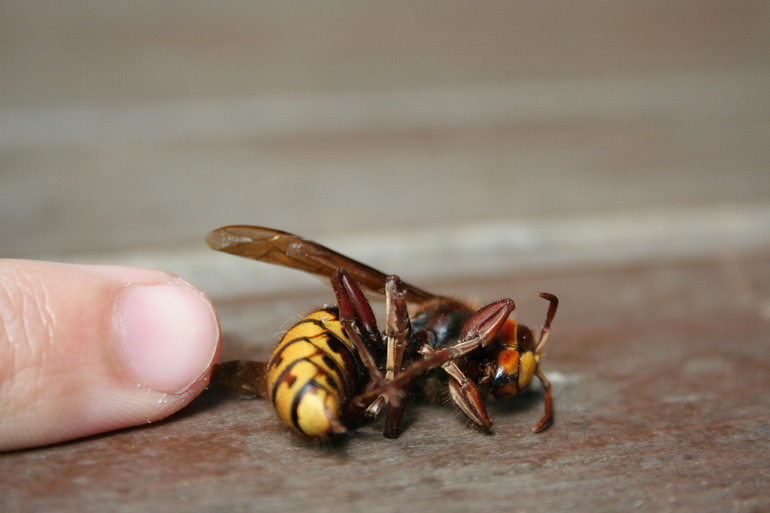
- The victim must be taken as far away as possible from the place where the hornet attacked him.
- The person is seated in a comfortable position, the belt is loosened and the shirt collar is unfastened.
- This insect after a bite does not leave a sting in the wound, therefore it is not required to search for it and remove it.
- If the hornet was killed during the bite, you should remove the sting fragments, removing them in any way possible, and then disinfect the wound with alcohol.
- The affected area is treated with antibacterial agents, including a weak solution of potassium permanganate.
- Place the bite should be wiped with alcohol or vinegar.
- Ice or something cold is applied to the affected area, in which inflammation and swelling quickly appear.
- The victim is given antihistamines to prevent allergies.
If the victim develops a severe allergic reaction, it becomes difficult for him to breathe, he loses consciousness and suffocates, then he should immediately call an ambulance or deliver the person to the hospital on his own. With the development of such anaphylactic shock, one should not hesitate, since every minute is expensive.
With proper treatment in a hospital, such unpleasant symptoms will quickly disappear, and the person will return to his former healthy life. However, if you do not provide him with help in time, the victim may die within half an hour.
Methods for the destruction of colonies
Most summer residents and owners of private houses, on the site of which there were such uninvited guests, still decide to get rid of such a dangerous neighborhood. It must be remembered that one should never try to damage the nest and destroy a colony of these huge insects. Being alarmed, hornets begin to attack their abuser, and such an angry swarm will rush at people within a radius of 50 meters or more.
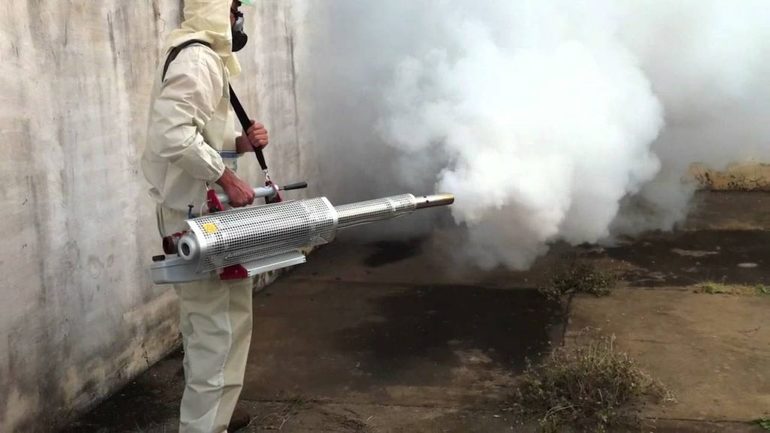
If it was not difficult to deal with wasps and wild bees on their own, then hornets are extremely cautious and sensitive insects, while they almost never sleep and are constantly awake. Therefore, even at night, you do not need to try to shake off their nest or put a plastic bag on it. The only right solution in this case is to contact professionals who can quickly and inexpensively get rid of the existing problem.
Specialists using powerful chemistry will poison these dangerous insects, and, dressed in protective suits, will be able to completely destroy the nest, destroy the brood honeycomb and kill the queen, thereby decapitating the entire colony. In each case, the used insecticides and methods of dealing with hornets will vary, depending on the size of the nest and its location.
- How to choose a vacuum cleaner taking into account the characteristics of the house and coatings?
- What to look for when choosing a water delivery
- How to quickly create comfort at home - tips for housewives
- How to choose the perfect TV - useful tips
- What to look for when choosing blinds
- What should be running shoes?
- What useful things can you buy in a hardware store
- Iphone 11 pro max review
- Than iPhone is better than Android smartphones



